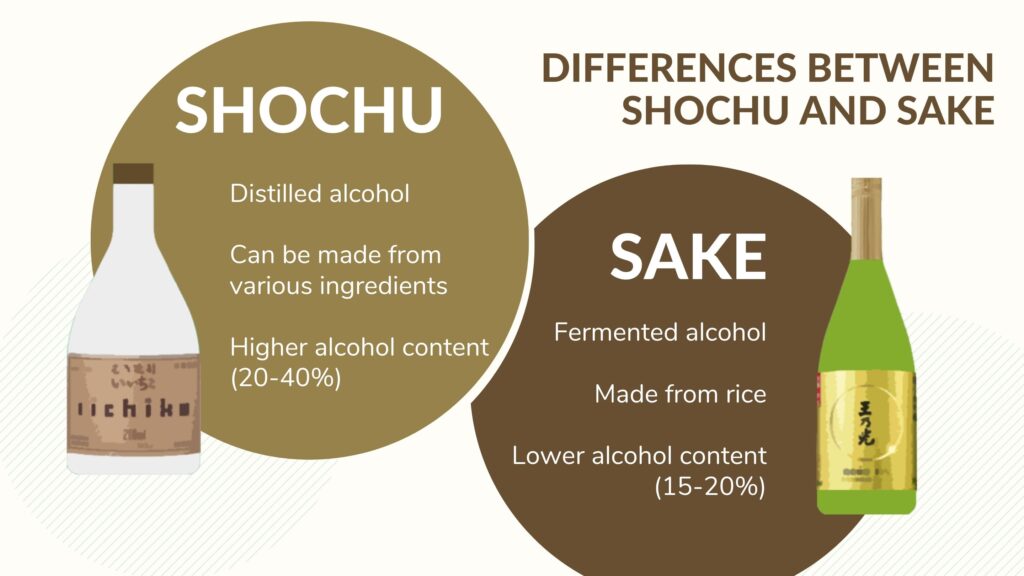Many people would have heard and tried sake, but Japanese shochu is still relatively unknown in Singapore. This simple guide will help you to maybe choose your next favourite drink!

What is Shochu?
Shochu (焼酎) is a traditional Japanese hard liqueur. It is a distilled alcohol, rather similar to vodka, but do not confuse it as a ‘Japanese’ vodka. Shochu can be distilled from a wider variety of base ingredients such as sweet potatoes (imo) and barley (mugi).
Shochu is traditionally a single distilled alcohol, known as honkaku shochu. However, thanks to modern machinery for repeated distillation, you can also see multiply-distilled shochu. This multiply-distilled shochu usually can be found mixed in cocktails and chu-hais (P.S. See our oolong-hai recipe here).
History of Japanese Shochu
The earliest record of shochu being found in Japan’s history can be dated at least to the 16th century. It is interesting to note that one of the oldest written references to shochu in Japan can be attributed to two carpenters. In 1559, two carpenters who worked at the Hachiman Shrine in Okuchi, Kagoshima inscribed graffiti on a wooden plank on the roof of the shrine. The graffiti was an indication of their unhappiness toward the high priest whom they felt was stingy for not giving them any shochu to drink while they worked.
Differences Between Shochu and Sake
- Manufacturing Process
- Shochu is produced by distillation, similar to the way vodka is produced, while sake is produced in a process similar to beer.
- Alcohol Content
- Shochu has a higher average alcohol content (20-40%), while sake has a lower percentage of alcohol (13% to 16%).
- Main Ingredients
- Shochu can be made from a range of different basic ingredients, while the base ingredients for all sake is rice.
- Learn more about the different types of shochu in our blog here.
- Serving Style
- Shochu can be enjoyed in a variety of ways. On the other hand, sake is usually enjoyed chilled, warm or hot.
- Sake is usually never served with ice or water.
- Find out more about enjoying your shochu in our blog here.


